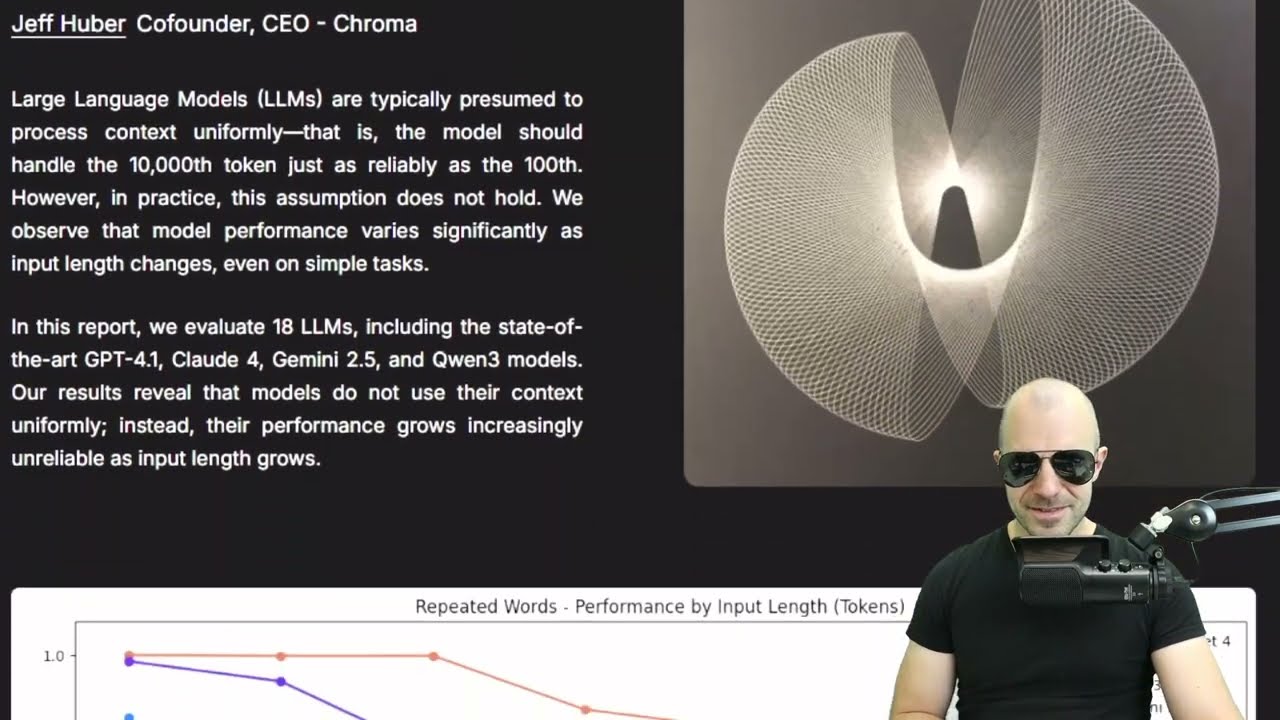The video analyzes a paper showing that increasing the input token length in large language models often leads to decreased performance, especially on complex tasks requiring nuanced understanding beyond simple keyword matching. It emphasizes that effective context engineering—selecting and presenting relevant information—is more crucial than merely expanding context windows to maintain model accuracy and reliability.
The video analyzes a paper investigating how increasing the number of input tokens, or context length, affects the performance of large language models (LLMs). While many current models demonstrate strong abilities in “needle in a haystack” tasks—where a specific piece of information is retrieved from a large context—the paper reveals that this performance deteriorates as the context grows longer, especially when tasks become even slightly more complex. The key takeaway is that simply stuffing more information into the model’s context window does not guarantee better results; instead, smart selection and engineering of the context are crucial for maintaining high performance.
The paper evaluates multiple popular LLM families, including Claude, GPT, Gemini, and Quen, across varying context lengths. Initially, all models perform well with shorter contexts, but as the input size increases, their accuracy declines. This decline is more pronounced when the task requires understanding beyond simple lexical matching, such as when the question and answer do not share many common words or when distractors—text segments similar but irrelevant to the question—are introduced. These distractors confuse the models, leading to more errors, especially in longer contexts where distinguishing relevant from irrelevant information becomes harder.
One significant insight from the paper is the difference between coherent and shuffled context. Surprisingly, models perform better when the context is shuffled and incoherent compared to when it is a coherent, meaningful text. This may be because coherent text requires the model to spend computational resources understanding the broader context, which can interfere with locating the specific information needed. In contrast, shuffled text reduces these interactions, allowing the model to focus more directly on matching the question with relevant tokens.
The paper also explores a benchmark called LongMeEval, which tests models on long conversational memory tasks involving knowledge updates, temporal reasoning, and multi-session integration. The experiments show that models perform significantly better when given a focused context containing only relevant information rather than the entire conversation history. This finding underscores the importance of context engineering: providing a concise, relevant subset of information leads to much higher accuracy than overwhelming the model with all available data, even if it fits within the model’s maximum context length.
In conclusion, the paper highlights that LLMs do not maintain consistent performance as input length increases, especially on tasks requiring nuanced understanding beyond lexical overlap. It calls for more rigorous evaluation methods for long-context capabilities and stresses the critical role of effective context engineering. Rather than relying on ever-expanding context windows, users and developers should focus on intelligently selecting and presenting relevant information to maximize model reliability and performance. The authors have also made their code publicly available to encourage further research and validation of these findings.
